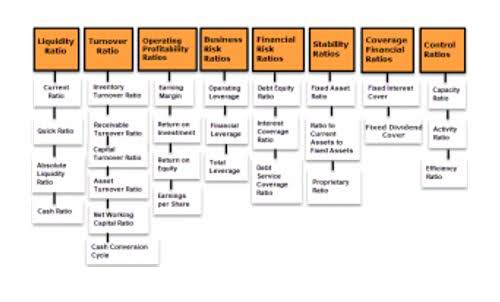
The second is the ‘Accounts Receivable Period,’ which is how long it takes for a business to collect its dues following a credit sale. Looking to streamline your business financial modeling process with a prebuilt customizable template? Say goodbye to the hassle of building a financial model from scratch and get started right away with one of our premium templates. So, to clear up any confusion you might have, let’s break down the operating cycle in simple terms, from what it is to how to calculate it to the operating cycle formula and more.
Example Calculation

A comparison of a company’s cash cycle to its competitors can be helpful to determine if the company is operating normally vis-à-vis other players in the industry. Also, comparing a company’s current operating cycle to its previous year can help conclude whether its operations are on the path of improvement or not. Before we dive into the mechanics of calculation, we need to know what we’re dealing with. An operating cycle can be understood as the average time a business takes to make a sale, collect the payment from the customer, and convert the resources used into cash.

The Impact of a Short or Long Operating Cycle

Speaking of a long operating cycle, it suggests that the company is taking too long to sell its inventory and collect cash from customers. This could indicate problems in inventory management or inefficiency in collecting receivables. Days Sales Outstanding (DSO) measures the average number of days it takes for your company to collect payments from customers after making a sale.
What does a longer or shorter operating cycle indicate?
- Monitoring key performance indicators and utilizing the right tools further enhances your ability to succeed in this critical aspect of financial management.
- Integration between these tools can enhance your ability to manage and optimize your operating cycle effectively.
- If a company is a reseller, then the operating cycle does not include any time for production – it is simply the date from the initial cash outlay to the date of cash receipt from the customer.
- In the realm of business finance, understanding the concept of the operating cycle is not just about processing a formula; it’s about comprehending a company’s efficiency, liquidity, and overall financial health.
We will explore essential tools and software that can help you effectively manage and optimize your operating cycle. The operating cycle is a financial metric that measures the time it takes for a company to convert its investments in inventory and accounts receivable into cash. Essentially, it is the duration between the acquisition of inventory and the collection of cash from customers after selling the inventory. The Net operating cycle, also income summary known as the cash conversion cycle, takes into account both the time required to convert assets into cash and the time taken to pay suppliers. It combines the time for inventory turnover and receivables collection minus the payables period. Now that you have a solid understanding of the operating cycle and how to calculate it, let’s explore practical strategies that can help you optimize and enhance the efficiency of your operating cycle.
Treasury & Cash Management Solutions
A longer cycle might indicate inefficiency in inventory management or difficulty in collecting receivables. These case studies underscore the importance of effectively managing the operating cycle in different industries. By implementing tailored strategies and optimizing key components, businesses can achieve more efficient cash conversion, enhance financial stability, and position themselves for sustained growth and profitability. Selecting the right tools and software depends on your business size, industry, and specific requirements. Integration between these tools can enhance your ability to manage and optimize your operating cycle effectively. Regularly operating cycle reviewing and updating your tools can ensure that you have the most current solutions to support your financial management efforts.
- The second is the ‘Accounts Receivable Period,’ which is how long it takes for a business to collect its dues following a credit sale.
- Managing your operating cycle efficiently often requires the right tools and software to streamline processes, monitor key performance indicators, and make informed decisions.
- Also, comparing a company’s current operating cycle to its previous year can help conclude whether its operations are on the path of improvement or not.
- As you can see there is a heavy focus on financial modeling, finance, Excel, business valuation, budgeting/forecasting, PowerPoint presentations, accounting and business strategy.
- A shorter cycle indicates that a company is able to recover its inventory investment quickly and possesses enough cash to meet obligations.
Manage receivable collection efficiently
To reduce your DSO, focus on efficient accounts receivable practices, including clear credit policies, prompt invoicing, automated reminders, regular reconciliation, and offering early payment incentives. The operating cycle is also known as the cash-to-cash cycle, the net operating cycle, and the cash conversion cycle. The Operating net cycle (NOC) refers to the period between paying for inventory and cash collected through the sale of receivables. As you can see there is a heavy focus on financial modeling, finance, Excel, business valuation, budgeting/forecasting, PowerPoint presentations, accounting and business strategy. The following table shows the data for calculation of the operating cycle of company XYZ for the financial year ended on March 31, 20XX.

Explore our marketplace and find the perfect tool to streamline your processes today. Let’s dive deeper into practical applications and examples to illustrate how the operating cycle formula works. HighRadius seamlessly integrates with leading ERPs like SAP and Oracle, ensuring a smooth and comprehensive O2C process. This integration allows businesses to leverage existing systems and data, significantly enhancing overall efficiency and accuracy. CFI is the global institution behind the financial modeling and valuation analyst FMVA® Designation.
- In this example, your operating cycle is approximately 128 days, which means it takes 128 days for your investments to return as cash.
- CFI is on a mission to enable anyone to be a great financial analyst and have a great career path.
- This helps maintain a steady cash flow, reduces the risk of bad debts, and ensures you have funds available for immediate use or investment.
- For instance, for the retail industry, it may be short, while for the manufacturing industry, it might be longer due to production times.
- By carefully controlling your inventory, you can reduce carrying costs, minimize the risk of obsolescence, and ensure that you have the right products available to meet customer demand.
- The cycle includes the time to purchase or produce inventory, sell it, and collect payment.
DPO Calculation Formula
This helps maintain a steady cash flow, reduces the risk of bad debts, and ensures you have funds available for immediate use or investment. A low DSI suggests that your company is efficiently managing inventory and selling products Partnership Accounting quickly. This can lead to improved cash flow, reduced carrying costs, and minimized risk of inventory obsolescence.